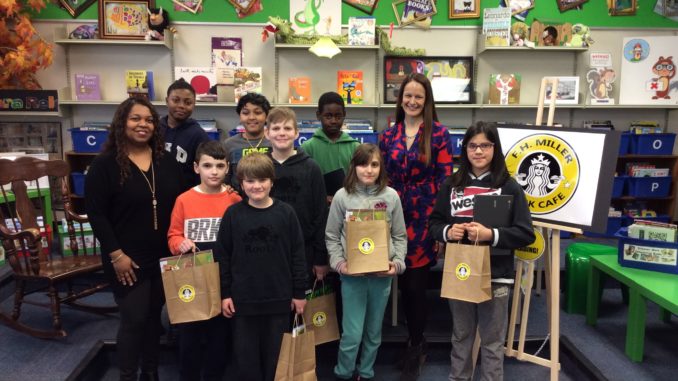
By Mira Campbell and Shellyan Narayan
One of the challenges of a teacher-librarian can be how to engage reluctant readers during short library periods. Students who are struggling with literacy can be hesitant to choose books, read for extended periods of time, or even enter the library space. This is seen even more so for students who have learning disabilities. One of the greatest opportunities I have as a teacher-librarian, is collaborating with homeroom teachers in my school to find creative ways to inspire students and encourage a love of reading. In addition, it’s a way to build educational technology capacity within our staff. There are many benefits of teacher partnership in the library for both students and educators. This article documents the learning journey of both students and teachers on a collaborative project in the library learning commons entitled, Hosting a Modern Book Tasting in the Elementary Classroom.
Book Tasting at FH Miller Jr. PS
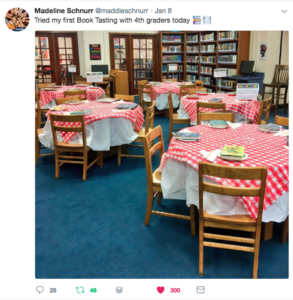
The inspiration for this project came from Twitter, where many educators create professional learning networks (PLNs) to share and learn from each other. I saw the idea about hosting a “book tasting” which I shared with my colleague. We were both excited about the concept and started by deciding what we liked about it. For example, we liked the café ambience, serving food and having actual menus, but knew we wanted to change it to reflect a modern book café experience. If you walk into any café today, you will see people using devices such as laptops. Our students are very comfortable with technology and use Chromebooks daily in their program. We wondered what would happen if we included technology in our café.
 |  |
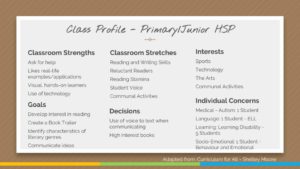
Having previously worked with our special education teacher, I knew we worked extremely well together. Shelly has a half-day special education class which is a small class of ten students. The class learning profile includes students with learning disabilities, socio-emotional challenges and English Language Learners (ELL). The students enjoy real-life examples, hands-on learning, are proficient with technology and have an interest in the arts. We knew they would enjoy it if we committed to being in character the whole time (e.g., role of the server and host).
They are also reluctant readers and writers, with limited reading stamina, who require opportunities to learn to communicate effectively. We wanted to build the learning experience around their strengths and interests such as communal activities that involve sharing food.
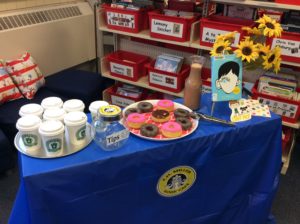 | 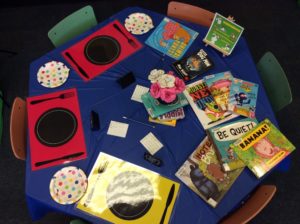 |
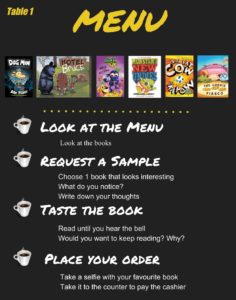
We began planning by thinking about goals for the students and ways to address cross-curricular expectations (e.g., language, drama and learning skills) for the students, ranging in abilities from Kindergarten to Grade 4.
Our goal was to design an experience where all students could be successful engaging with reading. In order to do that, we used technology to support and capture their learning. The texts selected included wordless books, picture books, beginning readers, graphic novels, and chapter books. Each table had a custom menu for the genre. There was also a range of reading options at their independent and instructional levels. We gave them choice on how they communicated their understanding. Students answered questions on Chromebooks using Book Creator for Chrome.
Book Creator provides built-in support for all learners. They have the choice to use voice to text, audio record their responses, or type. They can also use the Read to Me feature to listen to their responses. With the latest update to Book Creator there is now real-time collaboration. This means students can all work in the same online book at the same time. Students can see what their peers are doing if they get stuck for ideas and teachers are able to check in on their progress remotely.
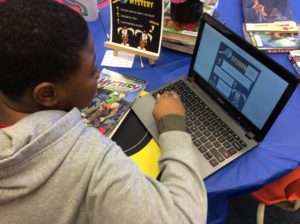 | 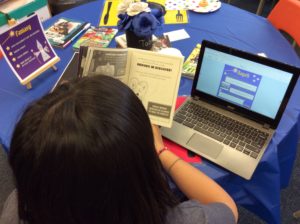 |
Watch the features in action… Video of Book Creator for Chrome Features
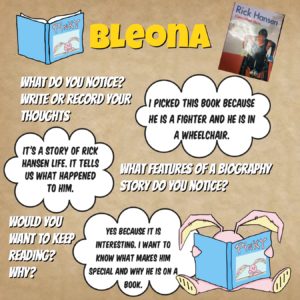
At our café, students were required to identify characteristics of genres as well as how to make a prediction and give their opinion on a text. The questions were the same for each of the six genres we covered (e.g., fantasy, adventure, mystery, realistic fiction, humour and biography). For the final project, students worked in pairs to choose their favourite genre and make book trailers. One group ‘app smashed’ using both the Green Screen by Do Ink app and the iMovie app to create their book trailer. This final task was a creative way for students to demonstrate their understanding and gave the students an authentic purpose because they knew their trailers would be shared with other students as well as the authors and illustrators of the books through Twitter.
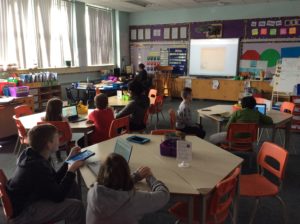
After the first week, we realized that we required a minimum of a double library period (80 minutes) for each book tasting. Students were able to successfully taste one book in the allotted time, instead of the two to three we had initially suggested. At first, students were sharing Chromebooks but we found it worked better when they had individual devices. We spaced the book tasting out over three weeks to allow for the pre-teaching of genres to occur. Finally, students continued some of the work in their homeroom classroom.
Student voice was encouraged during this project. We asked for feedback after each book tasting and made changes accordingly. The student feedback cards were modeled after the Ontario Learning Skills. Students were surprisingly honest with their comments which ranged from their favourite genre, café ambience, book selection and/or engagement.
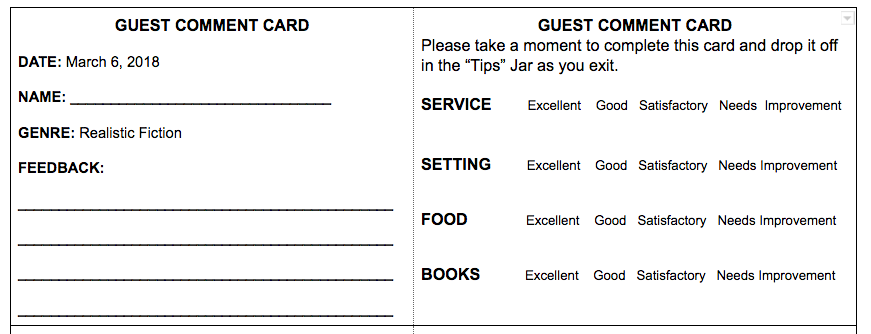
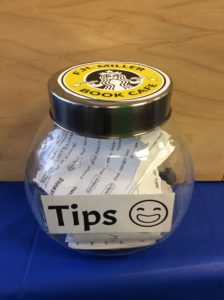
Planning of the project between the teacher and me occurred in person and virtually, using Google Apps for Education and the collaboration feature of Book Creator for Chrome. We were able to add comments into our Google Docs planning document and co-edited Book Creator genre characteristics and student templates. Finally, we had a Google Meet video session and shared our computer screen in order to co-edit our iMovie book trailer.
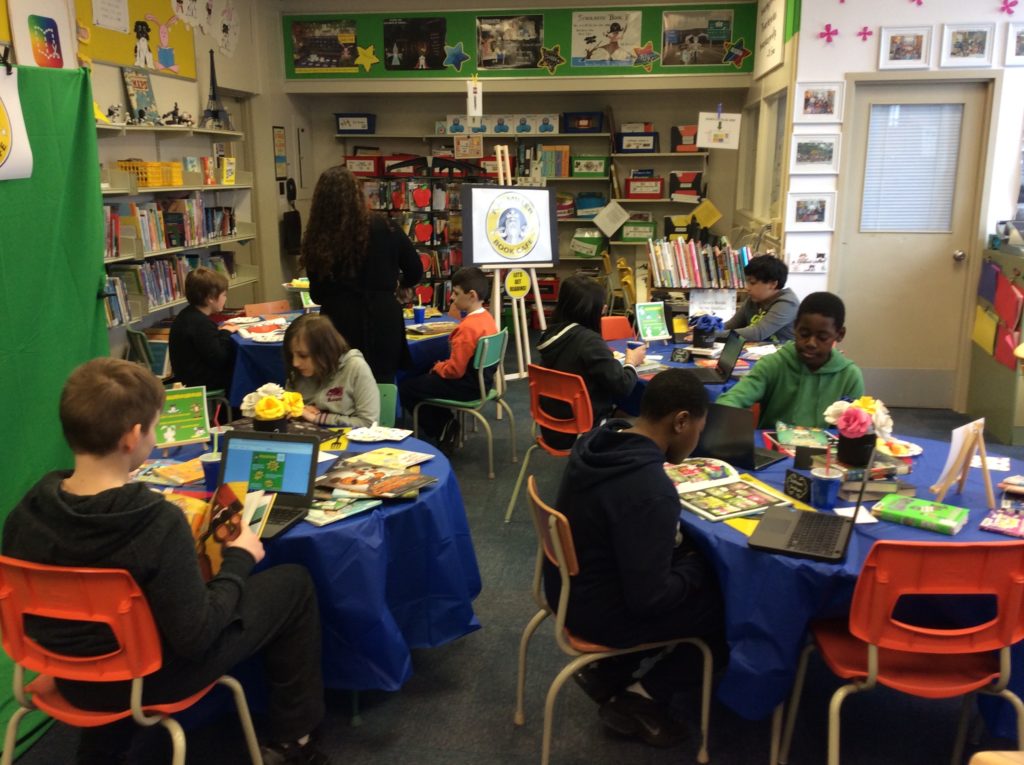
Collaboration in the Library Learning Commons
From a classroom teacher’s perspective:
As a classroom teacher it can be quite difficult to reach all students while tackling the Ontario Curriculum, especially so when you teach a Special Education class. Therefore, it is very valuable when you find a colleague who is willing to help you with your learning journey for the year. I have found this with Mira, our teacher-librarian who is also a special education teacher – an added bonus for me.
From a teacher-librarian’s point of view:
As a teacher-librarian, it can be challenging to create meaningful learning experiences in short library periods. In addition, while I know all the students in the school, building a relationship can be more challenging as I spend less time each week with students. Some students may be hesitant to try new learning in the library without the support of Shelly, their homeroom teacher. The classroom community created by the teacher helps bridge the gap because students are more willing to participate in activities in the library.
So what are the benefits of collaboration?
A meaningful learning experience that encourages professional growth – both partners bring similar and different experiences and expertise to the task. Throughout the collaboration process, you may find that your partner is stronger in one area than you. For example, the teacher-librarian (Mira) is very skilled with technology, while the classroom teacher has an arts background. Mira has deep knowledge of the library collection, variety of text levels and search databases (e.g., Novelist), while Shelly has an unparalleled understanding of the students’ individual needs and the classroom learning profile. Both Mira and Shelly have extra qualifications in Literacy and Special Education so they used those skills to achieve a balance and learned a lot from each other as they addressed the different needs of their students.
Support from someone who wants to help you achieve your common goal – there is a great deal of trust involved when co-teaching. You have to feel safe enough with the other person to willingly take risks and share your ideas. Also, the task is achieved more efficiently with two people, as opposed to one, and large projects become less overwhelming.
Opportunity to model an important learning skill for students – collaboration. The interaction between teachers becomes part of the learning experience. Furthermore, as colleagues collaborating, we challenge each other. That promotes rich dialogue and ultimately, we achieve more.
It’s more fun working with a colleague – the excitement and enthusiasm for a project builds when we work together. The students see our excitement and it transfers to them.
Reflecting on the Experience
- It is critical to provide students with choice and opportunities to share their voice. The unexpected outcome of this project was how engaged the students became in the café experience and how they were reading for enjoyment for extended periods of time. Deep learning was evident because it was a meaningful, interactive experience.
- Technology is a valuable tool to support a diverse range of abilities and ensure their success. Students were willing to take risks and try new things when they felt supported by their teachers and when they had access to the right tools.
- Learning opportunities that are planned with students’ strengths and interests are so important for our students. We want them to experience positive emotions and develop resiliency.
- Having a global audience outside of their classroom shows students that their work is valued. It was meaningful when we shared the student-made book trailers with the authors and they responded.
We hope you learn from our experience and embark on a collaborative journey of your own. Consider what can be achieved beyond the curriculum and traditional classroom lessons.
To see the Book Cafe in Action!
Watch the Book Tasting Movie
Student Responses
Book Creator Student Book
For a more detailed project description & how to recreate in a classroom see below:
Hosting a Book Tasting in the Elementary Classroom Presentation Slides
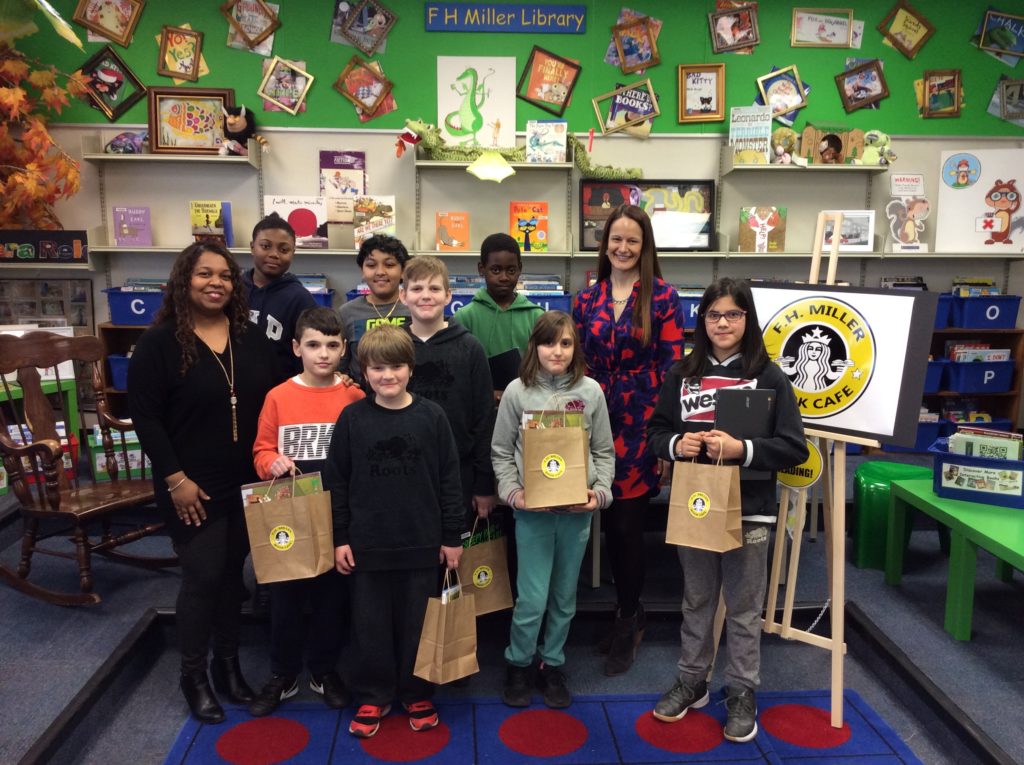
Additional Resources
Complete Genre Book List
Book Trailer Rubric
Book Tasting Curriculum Expectations

Mira Campbell has more than twelve years experience as an educator. She is the teacher-librarian, Methods & Resource teacher & the elementary chair at FH Miller Jr. PS. She is a Digital Lead Learner Mentor with the Toronto District School Board (TDSB) and a Book Creator Ambassador.
Twitter: @CampbellMira
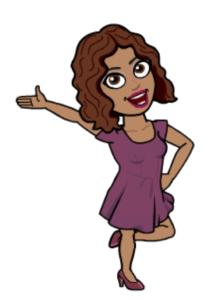
Shelly Narayan is a dedicated and experienced educator with more than eleven years of teaching experience with the TDSB. She currently teaches Home School Program & Prep at FH Miller Jr. PS.